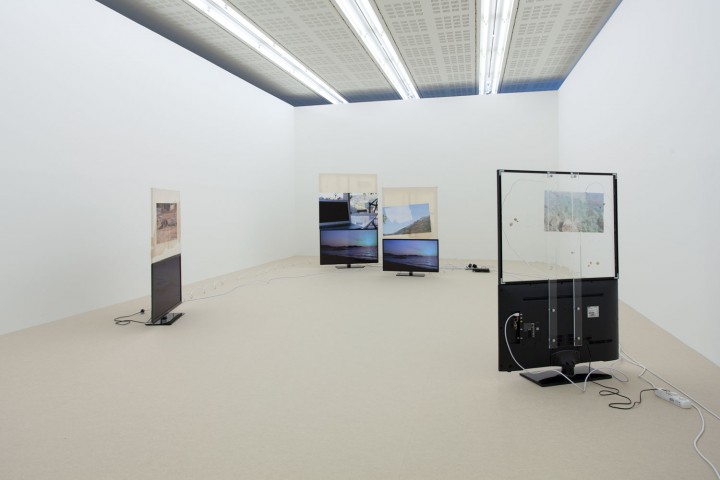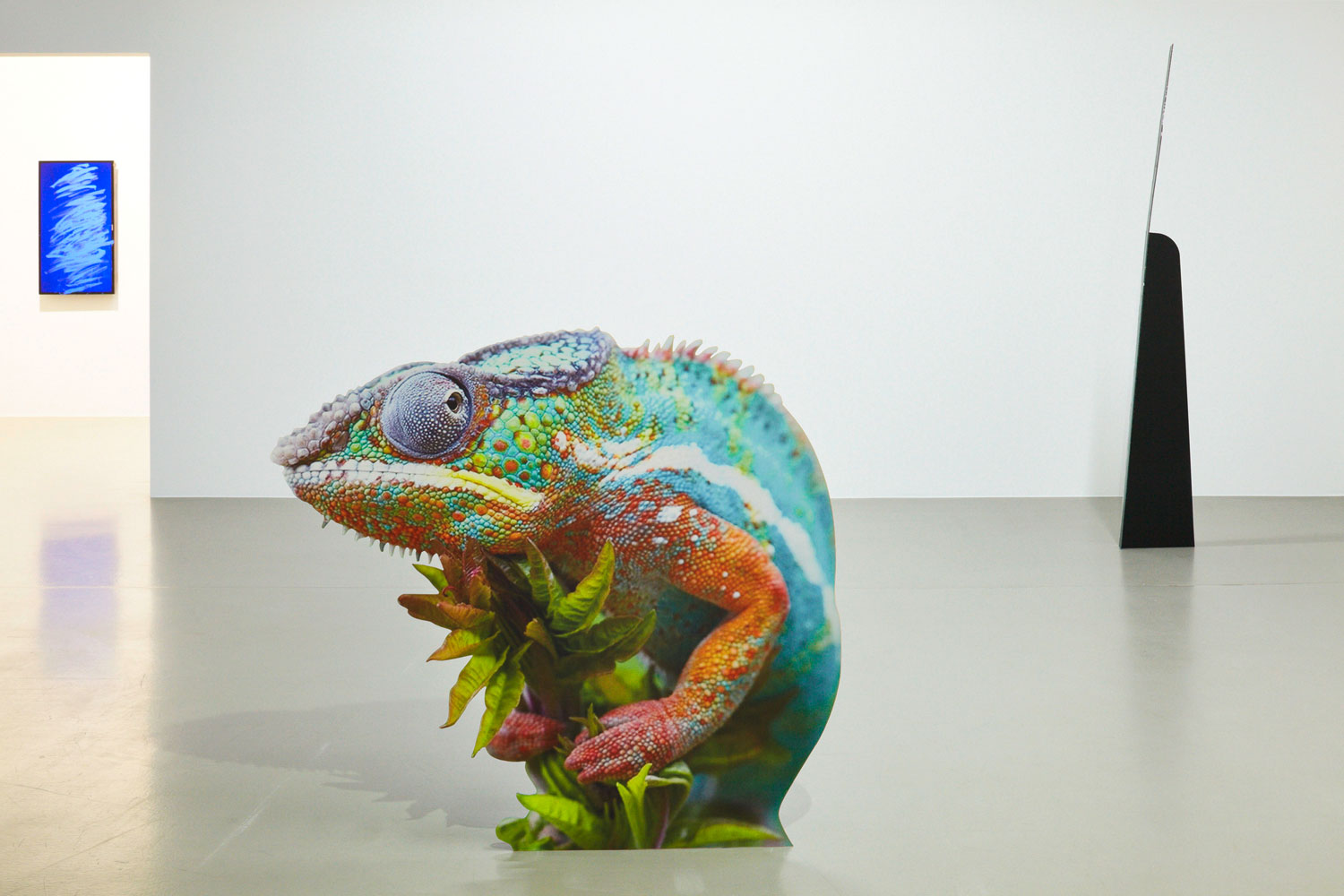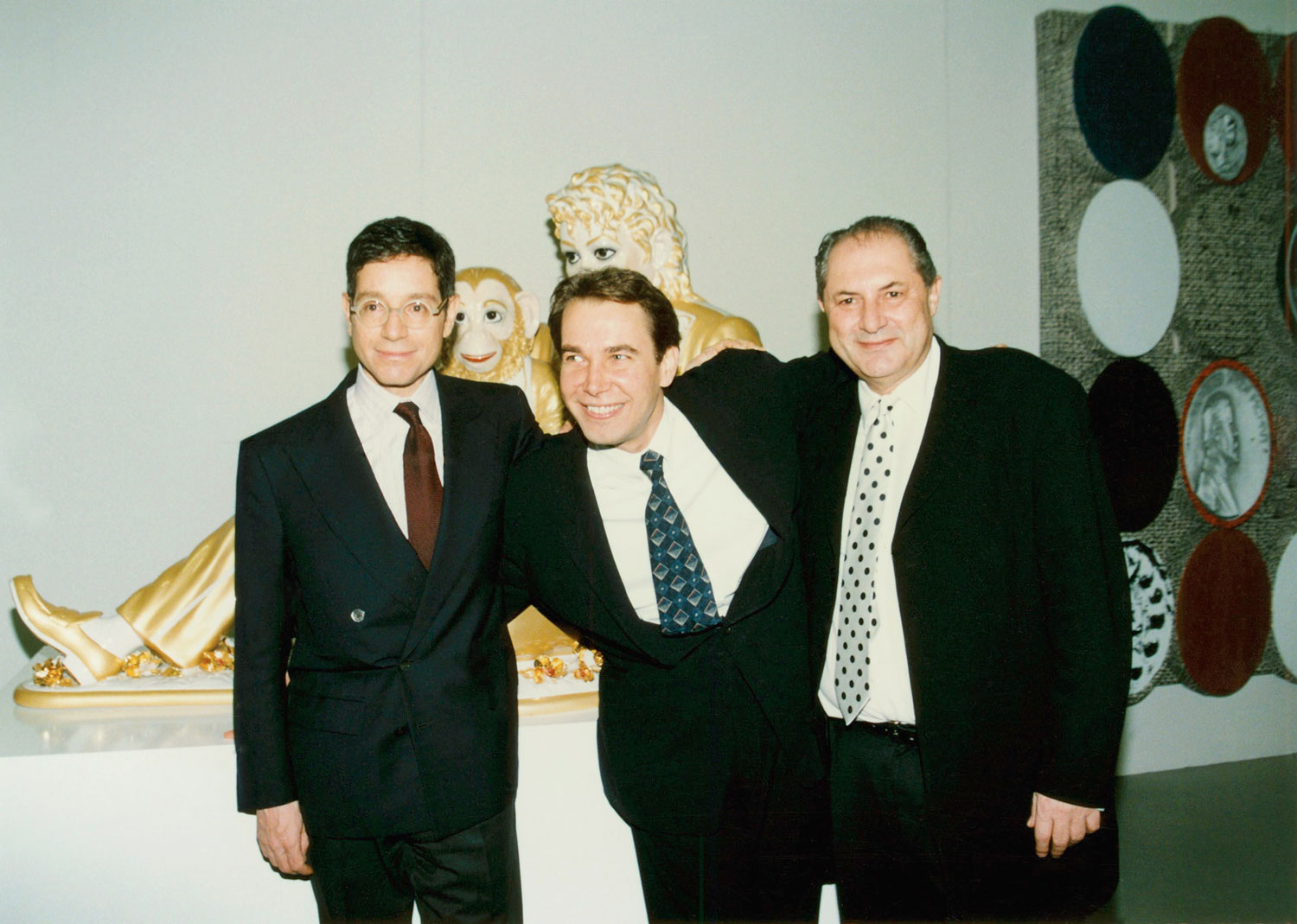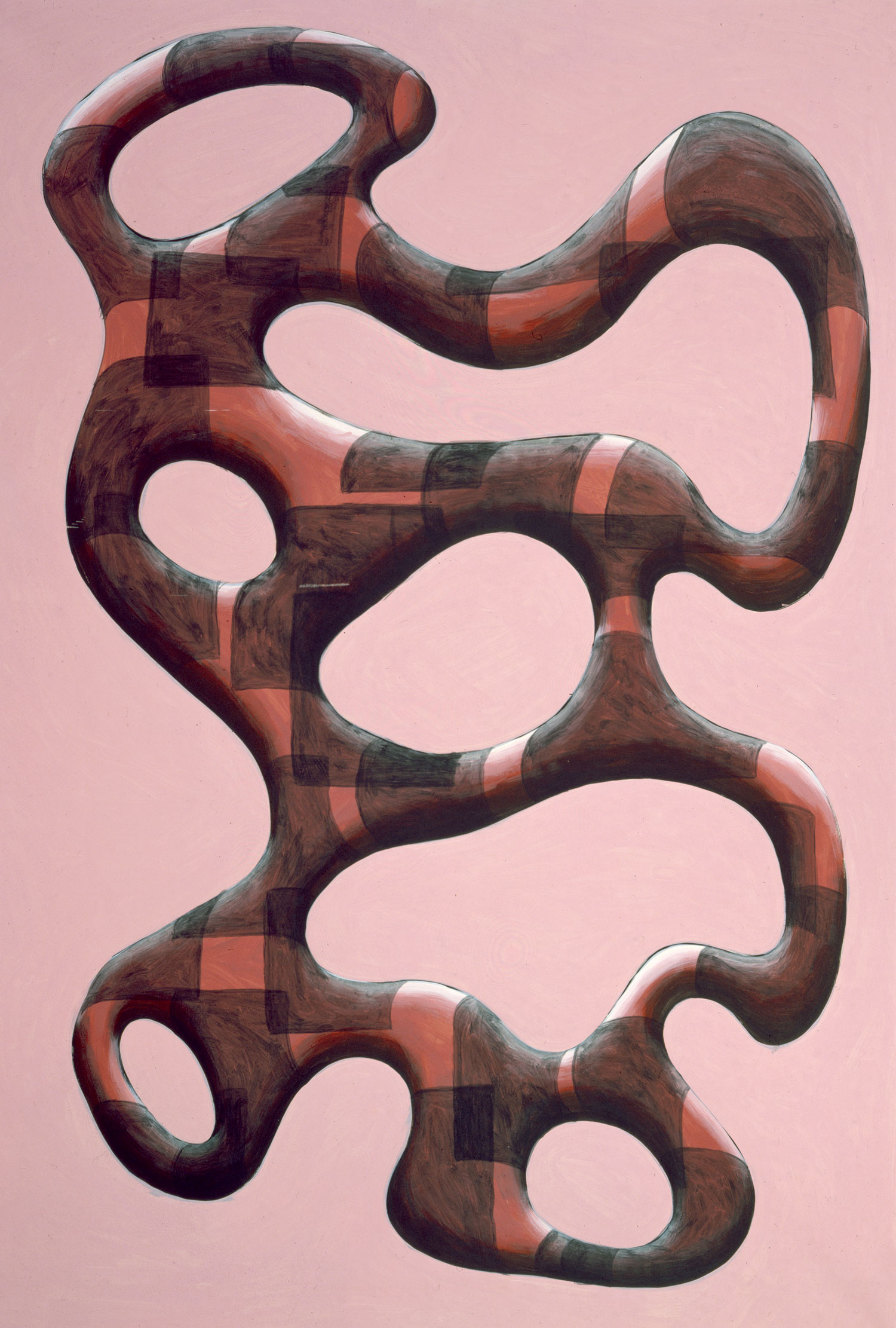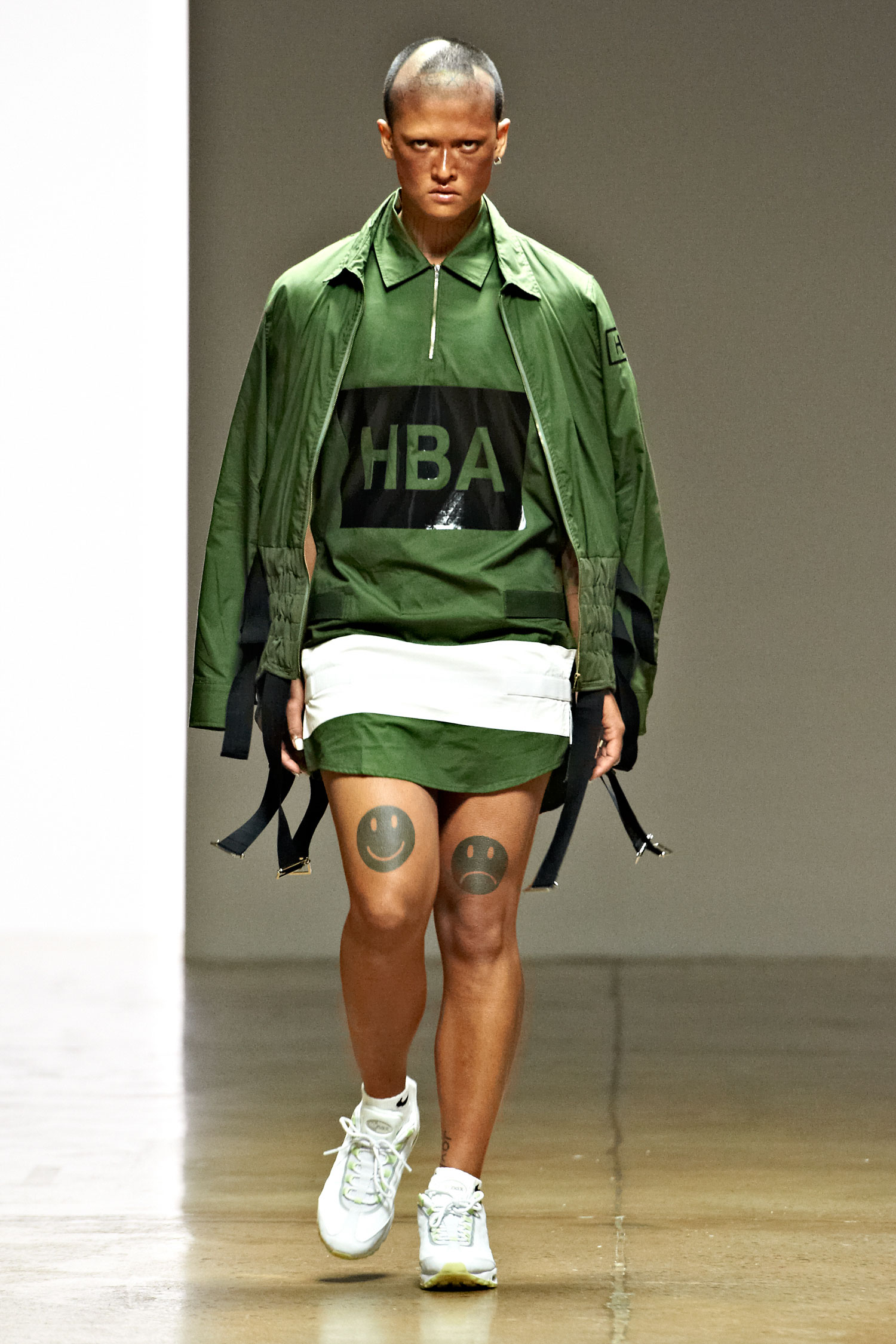
As the opening sequence of Gossip Girl plays on repeat on a forty-inch flat-screen TV, the voice of the series’ narrator blares from the monitor’s speakers: “And who am I? That’s one secret I’ll never tell!” Attached to the top of the shiny black television, a similarly sized painted black canvas extends the height of the object to human proportions. While on the canvas, a large oval-shaped blob of glass-epoxy resin with the words “you know you love me, xoxo” scrawled into it — another Gossip Girl confession — seems to hover, like a bead of mercury, on the glossy black surface. Behind the TV/painting tower, pieced together on the wall from A3-sized black-and-white photocopies, is a poster of the cast of the drama series — appearing to observe the sculpture with suspicion.
Blair Bitch Project (2013),shown at Perfect Present in Copenhagen in early 2013, contains all the elements that recur throughout Philipp Timischl’s anaphoric sculptural installations: a diptych, consisting of a flat-screen TV, which plays television series clips or else snippets that Timischl films using a DSLR camera; and a canvas of the same width but varying height, attached to the top of the flat screen with bolts and two narrow pieces of wood. Butwhile these components remain somewhat constant throughout the artist’s work, the specific content of each assemblage of poster, screen and canvas changes with each iteration. In the exhibition in Copenhagen, the canvas was painted, but in others it has been left unpainted. The quantity of the sculptures changes too: in Copenhagen there was one diptych, but they have been exhibited in groups of four, five or more, arranged casually around the space. These life-sized objects can be walked around, stood before or ignored. Timischl’s sculptures are things to be mingled with; they confront the viewer with an aesthetic that relates the buzzfeed of everyday life to its visual presentation and distribution.
The video content changes from TV footage (shows like Lost and Gossip Girl)to slow panning shots of the interior of a Viennese residence to intimate, home video-like images of a vacation with friends. The scenes, either taken from the Internet or filmed with a hand-held camera or iPhone, share a lack of clear storyline; they are vignettes that offer only a glimpse of some larger story. In his show “12346, not 5” at Neue Alte Brücke in the fall of 2013, Timischl exhibited in shuffle mode four videos previously shown in other exhibitions. The apparently random imagery is of an apartment whose soft, delicate colors — whites, grays and light-colored wood — evince a feeling of loss. Also visible are some of the artist’s own recycled works. Is this the home an ex-lover or a friend? Do the fresh flowers and flickering candles that the camera slowly observes in numerous shots convey anticipation of someone’s return? The linen canvases on top are framed with crudely attached thin wooden strips that have been painted black — their lackluster appearance a stark contrast to the fetishistic black of the TV display. In each of the untitled pieces, press images from Lost have been placed over splattered resin, making it seem as if they are floating. The disparate imagery found on the canvas and in the video complicates any potential narrative. After all, how can we create a story from two seemingly unrelated images? Adding to this layering, in his exhibition at Vienna’s 21er Haus in the summer of 2013, Timischl placed diptychs above two-by-three-meter cut-outs of cream-colored carpet and large prints of images from older pieces. This stratifying and intermingling of past and present work is suggestive of an approach that seeks to make the viewer aware of the history of the artwork. The diptychs are initially approached without any knowledge of their genesis, but signposts left behind in the works are reflexive visual flashbacks pointing to their history.

In the exhibition at 21er Raum in Vienna, “Philipp, I have the feeling I’m incredibly good looking, but have nothing to say,” five synched, Samsung flat-screens show clips of the artist and a group of friends on holiday in Corsica. There is something like a beginning and an end — a plane takes off and a plane lands — but everything in between is left to the viewer’s invention. Timischl himself is shown in one scene of the video; he is asked, “Willst du etwas sagen?” (Do you want to you say something?), to which he shyly smiles and turns his head away. One of these videos, The Collected/Corsica (2013), has a polyester cast resin “canvas” with shells and an inkjet print out of a still of the sea where the artist and his friends swam. This direct, reflexive link to the work occurs through all of Timischl’s work.
Timischl’s towers are self-referential, but this aspect actually makes them more inclusive. The sculptural diptychs function as empty shells to be filled with any content whatsoever. But whatever the content, the pieces remain connected to other works, to the artist and his life. And in the homogeneity of this pattern we discern a relationship to our own cut-and-paste, stop-and-go historiography. These sculptures slow down the speed of life and show us that though existence may be a blooming, buzzing confusion, to borrow William James’s phrase, we can also view it as a series of snippets and sound bites that let us tell the story however we like.

